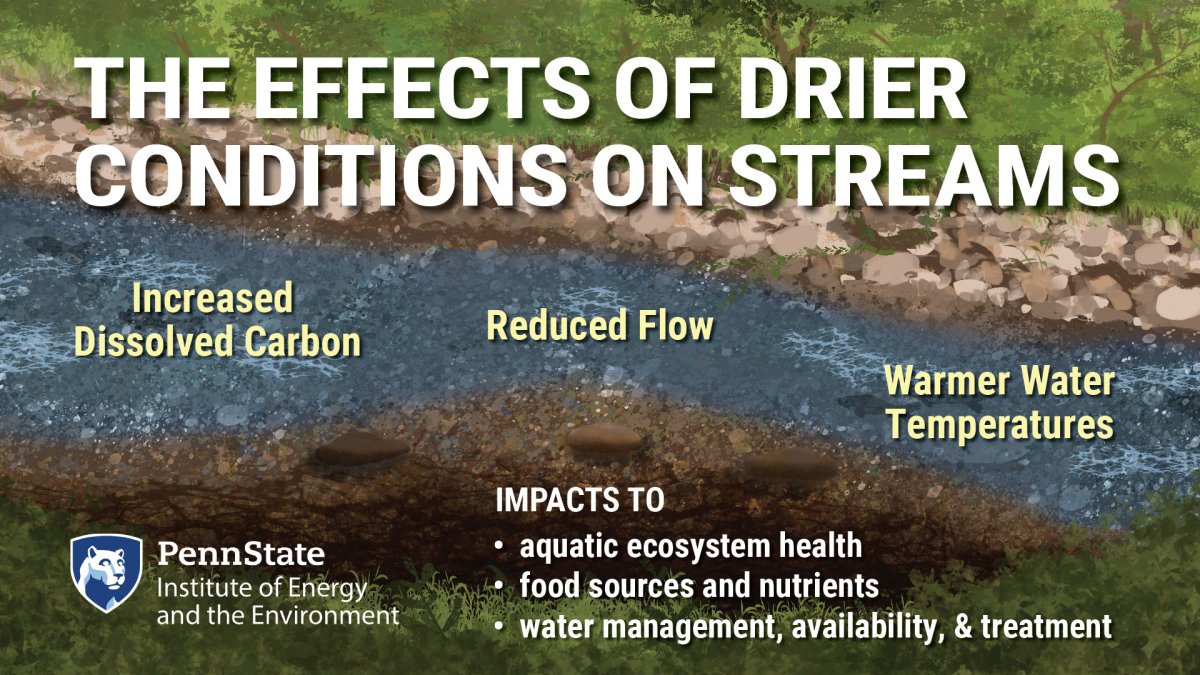Water in the western United States is in crisis. Climate change is increasing temperatures, and the water supply is waning. Although dry spells are common, the current megadrought has left this region the driest it has been since the year 800. Changes in water supply add pressure to the diverse water demands of the West, such as irrigation, industry, hydroelectric power, and water supply for rural, metropolitan, and tribal communities. More than 50% of this water demand is met by the melting snowpack of the Rocky Mountains, but since the 1950s, snowpack has been declining, leaving less water in streams. Therefore, the discussion of water in the West has centered on how to deal with lower water quantity. However, less attention has been given to how water quality changes in drier and warmer conditions.
Yet, Rocky Mountain streams' chemistry shows distinct responses to warming and associated changes in hydrology. Snow accumulates in the upper elevations of the Rocky Mountains in the cold winter months. As the season shifts to spring and temperatures warm, meltwater flows from the snowpack. This meltwater flows on and through land while interacting with soils, rocks, microbes, and roots. Some of this water is evaporated, utilized by plants, or becomes deep groundwater; nevertheless, some of this water will make it to the stream as discharge, carrying with it signs of its journey as unique stream chemistry.

To investigate the influence of climate on long-term stream chemistry, this work focused on two key water quality parameters: Dissolved Organic and Dissolved Inorganic Carbon (DOC & DIC), from more than 100 Rocky Mountain streams.
Results revealed that streams with lower mean discharge exhibited higher long-term mean concentrations of DOC and DIC. This suggests discharge plays a predominant role in shaping river chemistry. Whereas the most commonly considered primary influences, such as land cover and material abundance, play a secondary role in describing the variation along the concentration discharge trend.
Although concentrations of DOC and DIC show an increasing pattern, carbon fluxes show a decreasing pattern with lower discharge. Thus, results indicate the drier conditions and lower flows expected in Rocky Mountain streams will give way to higher stream carbon concentrations but lower loads and rates of carbon export leaving rivers.

These findings emphasize the intricate interplay between climate, discharge, and stream chemistry. The research underscores that the anticipated drier conditions will reduce flow and likely increase carbon concentrations while decreasing overall loads in Rocky Mountain streams. The changes in water carbon chemistry will affect water management and treatment efforts. For example, high DIC concentrations can potentially increase stream CO2 degassing, and high DOC concentrations cause concerns about forming carcinogenic disinfection byproducts during drinking water treatment. Additionally, changes in fluxes of DOC can affect food sources and nutrient availability in streams and significantly impact aquatic ecosystem health. Hence, this work emphasizes it is important to consider water quality changes when assessing the implications of warming and decreasing water quantity. By understanding the drivers of changing stream chemistry, we can work to mitigate potential negative consequences and ensure the preservation of the ecological integrity of Rocky Mountain streams in the face of ongoing climate change in the western United States.
Devon Kerins is a Ph.D. candidate in Environmental Engineering and Biogeochemistry at Penn State. Their research focuses on understanding how climate change affects water quantity and quality in mountainous watersheds. Kerins uses statistical analysis and a watershed-scale reactive transport model to study the interactions between water flow, biogeochemical processes, watershed structure, and external forcings to understand how they drive stream carbon levels.
Research publication
High Dissolved Carbon Concentration in Arid Rocky Mountain Streams
Devon Kerins and Li Li, Environmental Science & Technology 2023 57 (11), 4656-4667
https://pubs.acs.org/doi/10.1021/acs.est.2c06675






